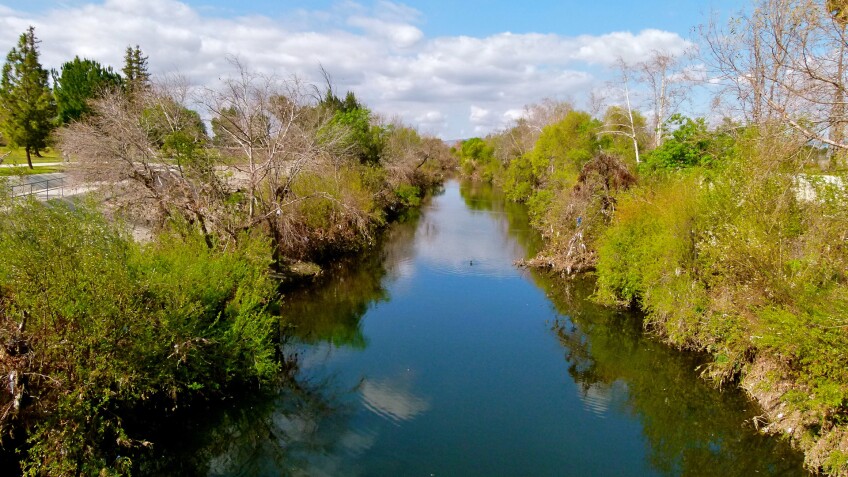The Willows of the Los Angeles River

If one were to search for an iconic river tree, it would be the willow. In “The Los Angeles River: Its Life, Death, and Possible Rebirth,” Author Blake Gumprecht writes that only a few hundred years ago, the Los Angeles River water never even made it to sea. Instead, most of it, found its way to the countryside forming marshes, lakes and ponds. On that rich, wet land, willows and cottonwood trees grew dense, making that area “almost impassable,” says a nineteenth century resident, who lived near the marshes of Lynwood.
Because of its ubiquity — and its many qualities — the willow became a valuable plant for the many Native Americans who settled by the river.
“They’ve always, always been there,” says Ellen Mackey, Senior Ecologist with the Metropolitan Water District of Southern California. “Every time you see a green line in the landscape in Southern California, or find a place that’s moist for a long period of time, if it’s not something invasive, it’s usually willow.”
According to Mackey, the willow is found near streams and lake edges, it grows easily from seed and floats like cotton snow in the spring.
The willow’s inner bark and leaves contains salicylic acid (Salix is Latin for willow), which is the active ingredient in common aspirin. “You see willow everywhere, if you know to look for it. In history, whenever someone offered willow root tea, it was for headaches,” says Mackey. The willow stems and branches were also used by Native Americans in basket weaving and for making arrow shafts.

The willow is also a riparian plant in every sense of the word. It isn’t only commonly found by rivers, its very presence contributes to the river’s health. “The willow’s shade cools down the water, so fish can live in it. Its roots create microhabitat for insects that support fish. Its leaves are soft and pliable — unlike the invasive Arundo — which is great for making nests. The soft cottony seeds are perfect to line a bird’s nest.”
Not only does it contribute to the river habitat, the different kinds of willows also provide different structures — low and high, much like a little natural city. Some tall willows give birds a perch, away from predators. Medium-height willows are great for nests. Low willows give prey animals cover, so they can get close to the water.
River goers can still see willows in the river today, as long as they know what to watch out for. “The first thing people see driving up the 5 freeway is likely the black willow,” says Mackey.
The Salix gooddingii is also called Goodding's black willow. “They’re really tall,” says Mackey, about 15 to 40 feet high. If you look closely, you’ll see that its leaves are the same on both the top and bottom.
The easiest to spot is probably the sandbar willow or the Salix exigua. Some may know them as coyote willow or narrow-leaved willow. Though it’s shorter —about five or six feet tall, but can grow as tall as fifteen feet — it has a narrow leaf, whose underside has short hairs on it, giving the lance-shaped leaf a silvery appearance.
The arroyo willow or Salix lasiolepis has leaves that are green on one side and white-ish on the bottom. Its leaf is also wider toward the end, which makes it susceptible to turning in the wind.
There are two other willow kinds, but “you have to get closer [to identify them]," says Mackey.
There’s the Salix lasiandra var. lasiandra or the Pacific willow. This willow has a leaf-like stipule — the part that sticks out at the base of the leaf. Its leaves are also lance shaped, which tapers to a point at the apex.
The last is Salix laevigata or the red willow, which also has a leaf-like stipule.

These various kinds of willows have populated the Los Angeles River, giving animals food and shelter, as well creating a more habitable river landscape. “They slow down the water in the river. These trees also make the soil ‘spongier,’ which allows water to recharge our groundwater basins. Trees, riparian soils, and soil microbes provide a safe, efficient means to remove excess nutrients and pollutants from water,” says Mackey.
The willows and the riparian plants of its ilk is what a true, healthy river system needs and little by little we’re slowly planting our way back to nature’s design.
This article was originally published in partnership with Newman's Own Foundation


